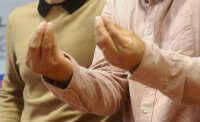We tend to prefer points of view that reinforce our own. This is curious, of course, because we develop our own cherished points of view through our exposure to the points of views of others, such as our parents. In short, no points of view arise or exist in isolation; they are inextricably bound to prevailing and counter opinion of others.
One widely held opinion is that evolution is based upon the survival of the fittest. In the mirror of modern culture “fittest” has come to mean “most successfully able to compete and dominate others.” America prides itself on idealized notions of the “self-made” man, “independence,” “freedom,” “the value of competition,” and the harsh reality of a “dog eat dog” world. Viewing Darwin’s theory of evolution in this particular way feels natural for us and it is a point of view that reinforces our widely accepted social narrative about the nature of success. Tantamount to cultural dogma, such belief ultimately becomes a self-fulfilling prophesy.
Yet survival of the fittest does not necessarily mean survival of the most competitive. In fact, nature is replete with myriad examples of the survival of the most cooperative. Rather than aggression and competition, the fittest survive by forging alliances, finding safety in mutual support, establishing symbiotic relationships, and exploring synergy. Moreover, such cooperation is found not only between members of one single species, but members of differing species and even between species of plants and animals.
For example, a thorny African species of the plant Cassia provides home, food and protection to a particular species of ant. The bases of the leaves exude a nutritious sap for the ants, and the plant’s thorns provide protection. The ants, in exchange, defend the plant from leaf-eating caterpillars and other herbivores. This cooperative symbiotic relationship is at the heart of both species’ fitness to survive.
Cooperative animal altruism, the sacrifice of one’s life or well-being for the common good or welfare of others also defies the purely competitive view of survival. Numerous reports are available of such behavior in the animal kingdom as a whole. Some birds have been observed feigning injury to distract predators; ants and bees regularly sacrifice themselves for the good of the hive. Both people and dogs enjoy our mutually supportive relationships. Those who believe that a Cartesian explanation – that animals are mere unfeeling automatons driven solely by genes, survival instinct and automatic responses – must by necessity ignore such compelling evidence.
Despite comforting cooperative relationships with family members, co-workers and close friends, we are nonetheless “trained” to view strangers as suspicious, dangerous, or threatening. Accordingly we rely on aggression and competition to “solve” problems (culminating in the assertion of power through brute force); the social narrative that reinforces such behavior is so powerfully established as to be virtually accepted as absolute truth. However, this “truth” is inseparable from the established fear-based ideological patriarchy of a male-dominated society and its beliefs. Cooperation and its associated “feelings” is relegated to the feminine, associated with weakness, denigrated as capitulation, and considered ineffective and dangerous. Thus it is that world-wide, those deemed the “fittest” are almost universally men.
Unless cooperation and its associated feelings can assume their proper place in world society, escalating male violence, war and aggression will in the end insure destruction, not survival.






